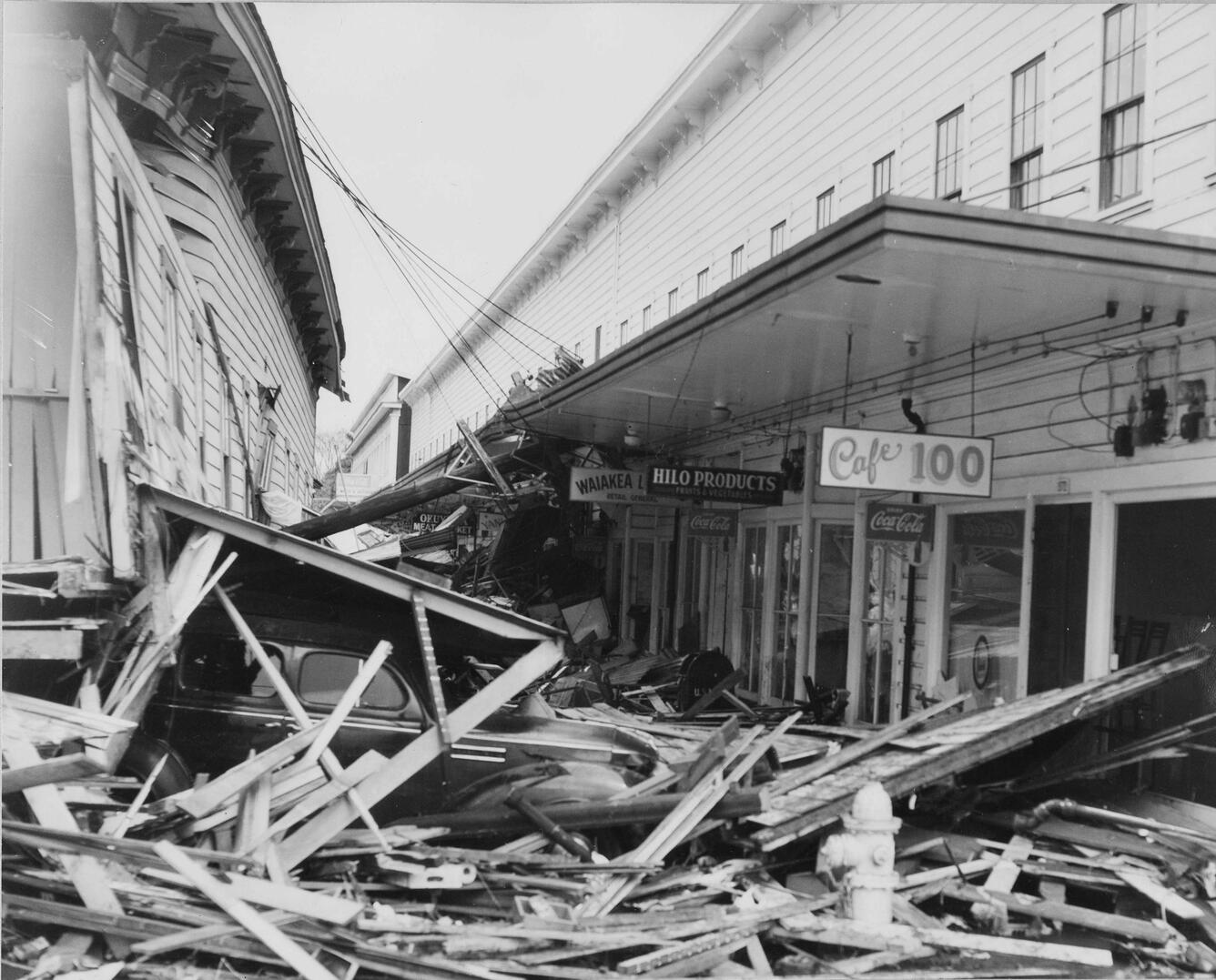Volcano Watch — Hoʻomākaukau means preparedness
April is a month that carries deep layers of meaning on the Island of Hawaiʻi. April is the cherished time of the Merrie Monarch Festival—a week-long celebration of Hawaiian culture, language, and art (particularly hula). April is also Tsunami Awareness Month, a time to remember past tragedies and strengthen our kuleana (responsibility) to protect our communities and ʻāina (land).
Volcano Watch is a weekly article and activity update written by U.S. Geological Survey Hawaiian Volcano Observatory scientists and affiliates. Today's article is by HVO geophysicist and seismic network manager Jefferson Chang.
At first glance, these two observances may seem separate—one, a joyous cultural gathering, the other a somber reminder of natural disasters. But in the rhythm of the moʻomeheu (culture), they are connected more deeply than most realize.
It is no coincidence that Tsunami Awareness Month is in April. It commemorates the most devastating tsunami to hit the State of Hawaii. The magnitude-8.6 1946 Aleutian Islands earthquake in Alaska produced the April Fool’s Day tsunami, which claimed 158 lives across Hawaiʻi nei and indelibly reshaped the town of Hilo.
Hilo, the home of the Merrie Monarch Festival, is a town that has risen from tragedy. In the heels of recovering from the disaster of 1946, Hilo was struck again by another devastating tsunami on May 23, 1960, from the magnitude-9.5 Great Chilean Earthquake. The ʻāina, here in Hilo, carries the stories of loss and resilience.
The Island of Hawaiʻi was struggling economically in the wake of destructive tsunamis in 1946 and 1960, as well as the declining sugarcane plantations. To capitalize on the growing tourism industry, the Merrie Monarch Festival was started in 1963, but it wasn’t until 1971 that the festival focus shifted to hula and included a competition.
Today, the Merrie Monarch Festival is more than a premier hula competition. Although it started as a means to boost the economy of the Island of Hawaiʻi, it has grown to a cultural celebration that perpetuates and revitalizes the culture of the people of Hawaii. Through hula kahiko, dancers become storytellers—conduits of ancestral memory. They tell of gods and goddesses, of kings and chiefs, of the wind, rain, and lava. And yes, they also tell of the ocean’s power—of tsunami, or kai eʻe, and the lessons woven into moʻolelo (stories) that have been passed down from generation to generation. Hula is more than a dance—it is a vessel of knowledge.
Hawaiian kūpuna observed nature closely. They understood the warning signs of a coming tsunami: the ocean receding, the unusual silence, the sudden shift in animal behavior. These ʻike kupuna (ancestral knowledges) live in their chants and dances, and many hālau use hula as a way to preserve and pass down this wisdom. Wisdom, or lessons, are sometimes borne out of tragedy.
To gather in Hilo, in April, to honor hula and celebrate Hawaiian culture, is an act of healing—a reminder that we are still here, still dancing, still passing on our stories. But the hazards associated with tsunami remain.
Coastal communities on the Island of Hawaiʻi have time to prepare for potential tsunamis from distant earthquakes, with warnings issued by the Pacific Tsunami Warning Center. However, local earthquakes and large underwater landslides can also result in tsunami, which can inundate our shores in minutes or tens of minutes. For example, the 1975 Kalapana earthquake, a magnitude-7.7 earthquake beneath the south flank of Kīlauea, caused damages both from the earthquake shaking and the subsequent tsunami. The tsunami had a maximum height of 20 feet (6 meters) at Halapē in Hawaiʻi Volcanoes National Park, where two people died, and it arrived at Punaluʻu less than a minute and a half after the earthquake struck.
So the next time you watch hula during the Merrie Monarch Festival, listen to the knowledge being shared. Some will speak of Pele’s fire, others of Lono’s rains. And some may speak of Kanaloa’s ocean—the waves that give life, and sometimes, take it away. Let us celebrate Hawaiian culture and remember the ʻāina’s history with humility. With the knowledge of past events that have impacted our communities, consider what you and your ʻohana can do today to be prepared for similar hazardous events in the future. Learn the official sources of information, know the evacuation routes, teach your keiki the signs, and know your home’s risks.
Volcano Activity Updates
Kīlauea has been erupting episodically within the summit caldera since December 23, 2024. Its USGS Volcano Alert level is WATCH.
Episode 18 of the Kīlauea summit eruption in Halemaʻumaʻu crater ended on April 22. Strong glow has been visible in both the north and south vents, with intermittent spattering visible in the north vent starting the evening of April 30. Intermittent low dome fountains were observed on May 1. Summit region inflation since the end of episode 18 suggests that another episode is possible. Sulfur dioxide emission rates are elevated in the summit region during active eruption episodes. No unusual activity has been noted along Kīlauea’s East Rift Zone or Southwest Rift Zone.
Mauna Loa is not erupting. Its USGS Volcano Alert Level is at NORMAL.
No earthquakes were reported felt in the Hawaiian Islands during the past week.
HVO continues to closely monitor Kīlauea and Mauna Loa.
Please visit HVO’s website for past Volcano Watch articles, Kīlauea and Mauna Loa updates, volcano photos, maps, recent earthquake information, and more. Email questions to askHVO@usgs.gov.


